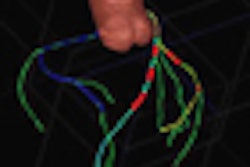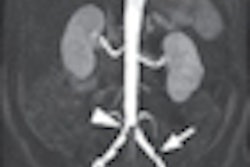In this presentation, Jae-Kwang Lim, MD, and colleagues from Gil Medical Center in Incheon will discuss their modification of Penumbra (Penumbra, Alameda, CA) to enable its use as a primary modality for recanalization. "Direct wedging between the tip of the reperfusion catheter and the clot, followed by forceful suction using a 20-cc or 50-cc syringe," is the unique feature of the technique, which does not require the use of a separator or aspiration pump, the authors wrote in their abstract.
The group treated 22 patients with acute ischemic stroke secondary to a large artery occlusion, using the modified Penumbra system for recanalization. All treated vessels were successfully recanalized, with a thrombolysis in cerebral infarction (TICI) scale of 2b or 3 in 81.9% of the patients, Lim will report.
Three-month outcomes were favorable in 45.5% of patients, and the only procedural complication was a transient dissection of the proximal internal cerebral artery that developed while advancing the guide catheter. The technique enables safe and effective revascularization in patients with acute ischemic stroke secondary to large vessel occlusion, according to the researchers.



















